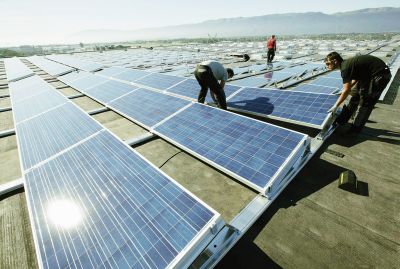Peninsular Malaysia has been allocated a quota of 450 MW, while the state of Sabah, on the island of Borneo, has been allocated 50 MW. A total of 20 MW per year has been set aside for residential PV system owners in Peninsular Malaysia through to the end of this decade, with 35 MW per year earmarked for commercial and industrial owners of solar plants.
Only registered consumers of distribution licensees will be eligible to apply for the net metering scheme. Parties that have failed to pay their electricity bills will not be allowed to participate, SEDA said in an online statement.
Rooftop arrays and panels installed on top of garages, car parks and similar buildings will be accepted under the program. Ground-mounted PV systems will be considered for inclusion on a case-by-case basis, as long as the installations are located on the property of the applicant and have been approved by the Energy Commission.
Residential consumers will be permitted to apply for systems up to 12 kWp for single-phase systems and up to 72 kWp for three-phase systems. Commercial and industrial owners of PV systems can apply for arrays up to 1 MWp size, or for 75% of maximum demand, if that is lower. Connection to a distribution licensee’s network will only be permitted via indirect connections — in other words, only within the owner’s internal distribution board.
Net metering contracts will remain valid unless terminated by either party. Foreign entities are eligible to apply for net metering as long as they are customers of the distribution licensees in Peninsular Malaysia or Sabah.
Credit for excess electricity to net-metering consumers will be based on prevailing displaced costs for the supply voltage at the point of common coupling, SEDA said. It has created the following formula to calculate the net billing of electricity:
Popular content
Net billing = [Energy Consumed from DL (kWh) x Gazetted Tariff] – [Energy Exported to DL (kWh) x Displaced Cost]
The prevailing displaced cost for a medium-voltage (1 kV to 50 kV) connection point has been set at 0.2380 ringgit ($0.05)/kWh in Peninsular Malaysia and at 0.2200 ringgit/kWh on the island of Borneo. The regulator will roll over net billing or credit for up to 24 months, after which time all credit is forfeited.
SEDA will require applicants to undergo a net-metering assessment study with their distribution licensee before applying for the scheme. However, residential system owners will not have to meet this requirement. Prospective applicants can find more information at https://services.seda.gov.my/nem
SEDA will process all applications within 30 days of receiving them. It will charge a non-refundable application fee of 10 ringgit/kWp. Electricity sent to the grid under the net metering scheme will be subject to the goods and services tax.
SEDA requires two kinds of meters for the scheme. A bi-directional meter with an import-export feature will be used to record amounts of electricity that are used, generated or exported, while a PV meter/data logger/inverter with monitoring functionality will be used to record the total amount of electricity generated by a given solar system. In addition, check meters may be installed to measure energy exports.
This content is protected by copyright and may not be reused. If you want to cooperate with us and would like to reuse some of our content, please contact: editors@pv-magazine.com.


1 comment
By submitting this form you agree to pv magazine using your data for the purposes of publishing your comment.
Your personal data will only be disclosed or otherwise transmitted to third parties for the purposes of spam filtering or if this is necessary for technical maintenance of the website. Any other transfer to third parties will not take place unless this is justified on the basis of applicable data protection regulations or if pv magazine is legally obliged to do so.
You may revoke this consent at any time with effect for the future, in which case your personal data will be deleted immediately. Otherwise, your data will be deleted if pv magazine has processed your request or the purpose of data storage is fulfilled.
Further information on data privacy can be found in our Data Protection Policy.